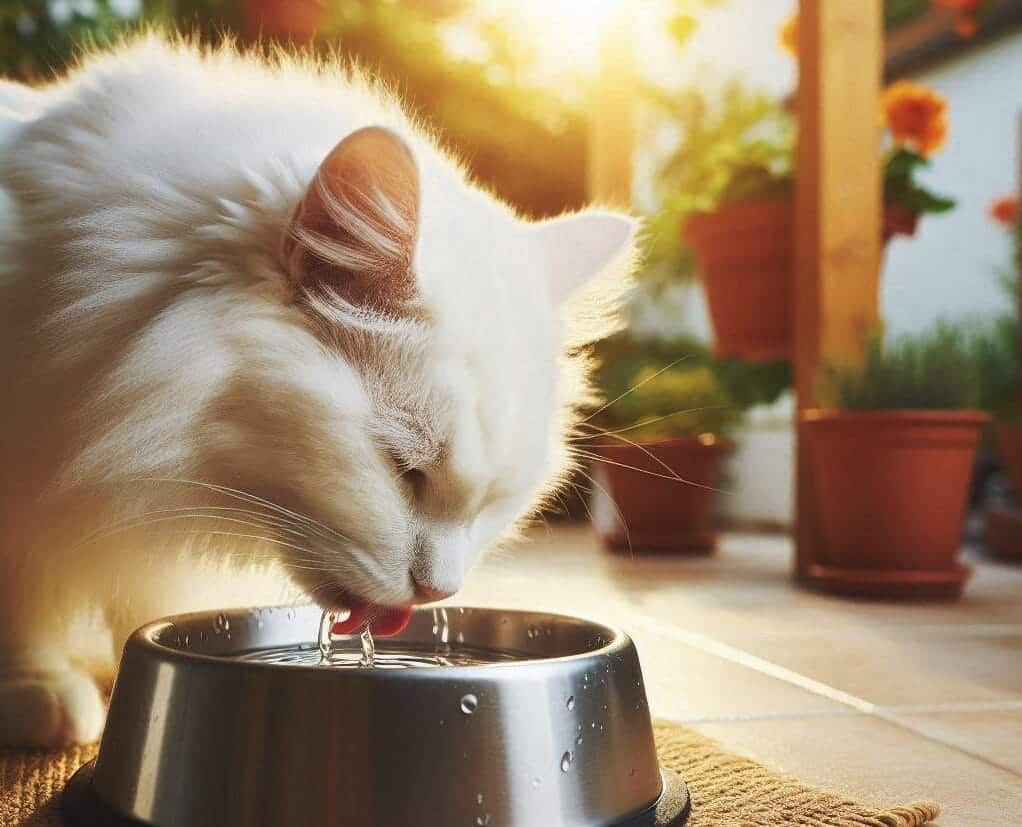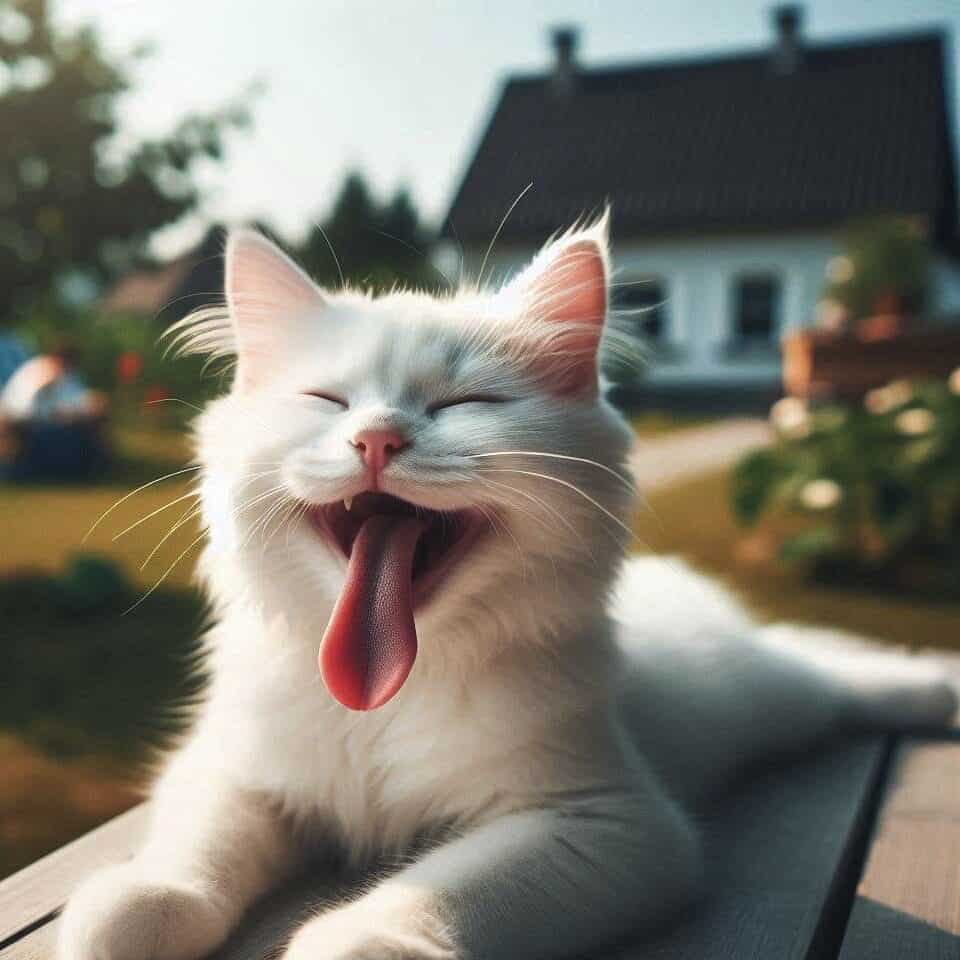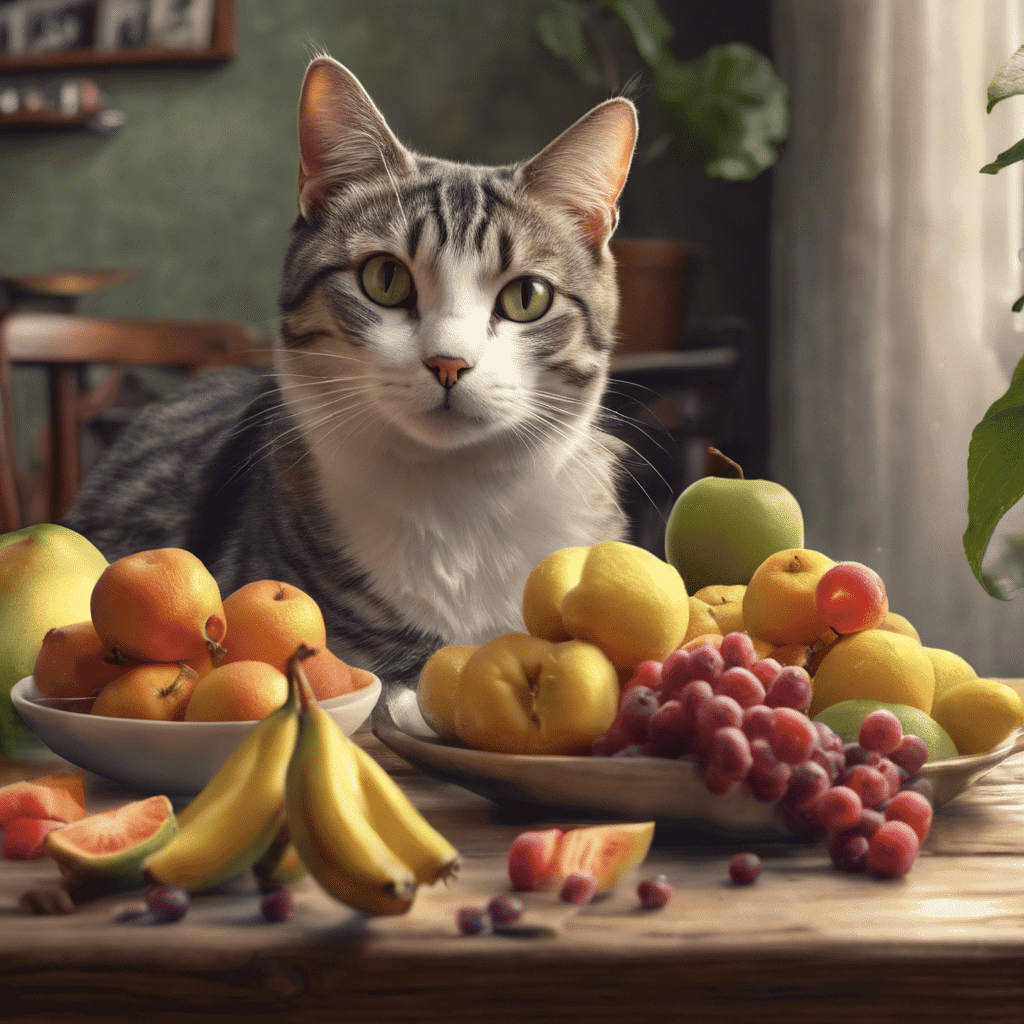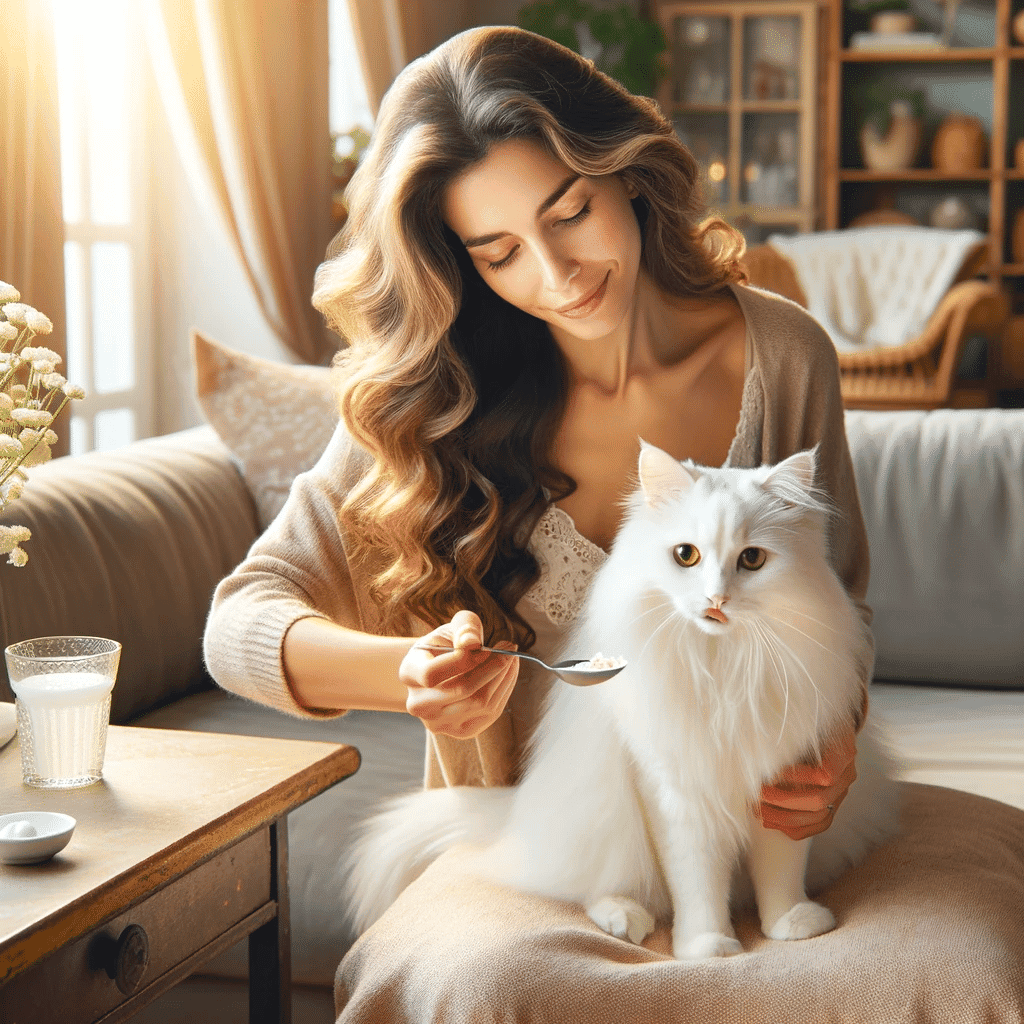
Cats have several ways to cool down when the mercury climbs. From limited sweating abilities to panting and grooming, these natural cooling mechanisms are essential for cats to maintain a healthy body temperature. Understanding these mechanisms can help pet owners provide the right environment and support for their cats during hot weather.
In this blog post, we’ll explore the fascinating ways cats cool down naturally and discuss how we can lend a helping hand when the mercury rises. By the end, you’ll be equipped with the knowledge to keep your cat comfortable and safe, no matter how high the temperature climbs. So, let’s dive in and discover the secrets of feline temperature regulation!
Understanding a Cat’s Cooling Mechanisms
Cats’ limited ability to sweat
Unlike humans, cats have a limited ability to sweat, making it challenging to cool down through evaporation. Cats have sweat glands exclusively on their paw pads, which are insufficient for maintaining their body temperature in hot climates. Therefore, they must rely on different strategies to cool down.
The role of panting in cooling down
Panting is a common way for cats to cool down when they are overheated. When a cat pants, it allows moisture to evaporate from their respiratory tract, which helps dissipate heat from their body.
For cat owners, discerning the difference between normal panting due to heat and panting that signals an underlying health issue is crucial. While it’s not uncommon for cats to pant briefly after vigorous play or in response to high temperatures, persistent or labored panting can be a red flag 🚩.
Conditions such as respiratory infections, heart disease, or even stress can manifest through abnormal breathing patterns. By staying vigilant and understanding their feline friend’s typical behavior, owners can ensure timely intervention and maintain their cat’s well-being. Regular veterinary check-ups and a cool, comfortable environment are key components in safeguarding a cat’s health.
How cats regulate body temperature through grooming
Grooming plays a crucial role in a cat’s ability to regulate its body temperature, especially during warmer months. As cats meticulously lick their fur, they not only remove dirt and loose hair but also stimulate the production of saliva, which evaporates and cools their skin.
This natural cooling mechanism is vital for shedding excess heat, ensuring that their internal temperature remains stable. By grooming, cats distribute natural oils across their coat, which helps with insulation and temperature control. So, grooming is more than just cleanliness; it’s vital for their overall health.
The Importance of Hydration for Cats in Hot Weather
The significance of water intake for cats
Maintaining appropriate hydration levels in cats is essential, especially under hot conditions. Water contributes significantly to the regulation of their body temperature and the sustenance of vital bodily functions. Pet owners should ensure that there is always an ample supply of fresh, clean water available for their cats.
Tips for encouraging cats to drink more water
Cats often don’t drink enough water on their own, so it’s key for pet owners to encourage them to stay hydrated. You can help by setting up several water bowls around the house, using a pet fountain to make drinking more fun, or including wet food in their diet to up their moisture levels.
Signs of dehydration in cats
Cat owners must remain vigilant for signs of dehydration in their feline companions, as it can quickly escalate into a serious health issue. Key indicators include dry gums, sunken eyes, lethargy, and a noticeable decrease in skin elasticity.
These symptoms can often be subtle, so regular monitoring of your cat’s behavior and physical condition is crucial. If any of these signs are observed, prompt veterinary care is essential to prevent further complications and ensure your cat’s well-being.
Early intervention can make a significant difference in recovery, underscoring the importance of attentive and proactive pet care.

How Cats Use Grooming to Stay Cool
The role of saliva in cooling down
In the scorching summer heat, a cat’s grooming routine isn’t just about staying clean—it’s a clever way to cool down. When a cat licks its fur, it leaves behind a thin layer of saliva that evaporates and helps draw heat away from its skin.
This natural cooling system keeps cats comfortable even when it’s super hot outside. It’s like they have their own built-in air conditioning! Through this smart self-care habit, cats show just how well they use their biology to stay cool and collected.
How grooming helps to remove excess heat from the body
By redistributing the heat trapped in its fur, grooming helps a cat remove excess heat from its body, facilitating easier dissipation. This process is vital for a cat’s natural cooling system.
Encouraging grooming in hot weather
Pet owners can significantly aid their cats’ natural cooling processes by ensuring they have access to appropriate grooming tools and maintaining a clean environment that promotes regular grooming.
Cats use their fur to manage body temperature, and consistent brushing helps eliminate excess hair, reducing the likelihood of overheating.
Utilizing high-quality grooming tools, such as brushes and combs tailored for various coat types, can enhance this routine for both the cat and the owner.
Moreover, keeping the living area free from dust and debris allows cats to groom themselves comfortably and frequently, further supporting their natural cooling mechanisms. By focusing on these care aspects, pet owners can help their cats remain cool and comfortable, even in warmer weather.
Seeking Shade: How Cats Find Relief from the Sun
The instinctual behavior of seeking shade
Cats, with their innate wisdom, often seek the cool embrace of shade when the sun’s rays become too intense. This instinctual behavior is a testament to their self-preservation skills, allowing them to find solace beneath leafy canopies or under the protective eaves of a porch. By retreating into these shaded sanctuaries, they effectively lower their body temperature, avoiding the discomfort and potential dangers of overheating. Whether nestled in the shadow of a garden shrub or sprawled beneath a patio chair, these feline retreats offer a natural respite from the relentless heat, ensuring their comfort and well-being.
Providing shaded areas for outdoor cats
Pet owners with outdoor cats must provide shaded areas where their pets can escape the sun and cool down when required. This can be achieved through the use of shaded structures or vegetation that shields them from direct sunlight.
Creating shaded spots for indoor cats
Even indoor cats thrive when they have access to shaded areas where they can escape the direct sunlight streaming through windows or doors.
These cool retreats are essential for helping them regulate their body temperature, ensuring they remain comfortable and healthy. By providing shaded spots within the home, such as cozy corners with curtains or strategically placed furniture, cat owners can create a sanctuary that mimics the natural environments cats instinctively seek.
This doesn’t just improve their well-being; it also leads to a more harmonious home where your furry friends can relax and play without the worry of getting too warm.
Cat’s Cooling Process: Panting
Understanding when panting is a cause for concern
While panting is a natural way for cats to cool down, especially after vigorous play or in warm environments, excessive or prolonged panting can be a red flag signaling potential health issues. Unlike dogs, cats rarely pant, so when they do, it warrants close attention.
Persistent panting may indicate serious conditions such as heatstroke, respiratory problems, or even heart disease. It’s crucial for cat owners to monitor their feline friends closely and seek veterinary care if panting is accompanied by other symptoms like lethargy, drooling, or rapid breathing.
Early intervention can make a significant difference in ensuring the well-being of our beloved pets.

How panting helps cats regulate body temperature
Through panting, moisture evaporates from a cat’s respiratory tract, which assists in dissipating heat from its body and thereby lowering its overall temperature.
Tips for helping cats cool down through panting
In the event that a cat is panting excessively, it is essential for pet owners to take swift action to ensure their feline friend’s well-being. Transferring the cat to a cooler setting can assist in stabilizing its body temperature and preventing heatstroke.
Ensuring access to fresh water is critical for keeping the cat hydrated and comfortable. However, if the panting persists or other worrisome symptoms arise, seeking prompt veterinary care is crucial.
A veterinarian can diagnose any underlying health issues and provide necessary treatment to secure the cat’s health and safety. Quick action can significantly impact the preservation of your beloved pet’s life.
The Significance of Proper Ventilation for Cats
Ensuring good air circulation in indoor spaces
Maintaining proper ventilation is vital for creating a comfortable indoor atmosphere for cats during hot weather. Effective air circulation helps to prevent overheating and enables cats to cool down appropriately.
Providing ventilation for outdoor cat shelters
Creating an outdoor haven for your feline friend is a delightful endeavor, but ensuring their comfort and safety is paramount. One crucial aspect to consider is proper ventilation to prevent overheating.
Incorporate shaded areas with breathable materials like mesh or lattice that allow for ample airflow while providing protection from the sun’s harsh rays.
Strategically placed fans or natural breezes can further enhance the cooling effect, ensuring your cat enjoys their outdoor adventures without the risk of heat stress. Remember, a well-ventilated space not only keeps your cat cool but also promotes a healthier, happier environment for them to explore and relax in.
The impact of poor ventilation on a cat’s ability to cool down
In a home where poor ventilation stifles the flow of fresh air, the atmosphere becomes increasingly warm and stagnant, creating a challenging environment for our feline friends. Cats, with their thick fur coats and limited ability to sweat, struggle to regulate their body temperature in such conditions.
As the air grows warmer and more oppressive, they may become lethargic, seeking out cool surfaces or shaded corners in a desperate bid for relief. Without proper airflow to disperse the heat, these beloved pets face discomfort and potential health risks, underscoring the importance of maintaining a well-ventilated living space for their well-being.
Recognizing Signs of Heat Exhaustion in Cats
Understanding the symptoms of heat exhaustion
Keeping your cat cool during hot summer days is super important for their health. Make sure they have plenty of shade and good airflow to stay comfy. Set up some cool spots inside and outside where they can escape the heat.
Don’t forget to keep their water fresh and cool, maybe even toss in some ice cubes. Watch out for signs of overheating like heavy panting or tiredness. By doing these things, you can help your cat stay happy and safe when it’s hot out.
Knowing when to seek veterinary help
If you notice your cat showing signs of heat exhaustion, it’s super important to get them to the vet right away. Heat exhaustion can turn into dangerous heatstroke really fast if you don’t act quickly.
Tips for preventing heat exhaustion in cats
To safeguard cats from heat exhaustion during intensely hot summer days, a multi-dimensional strategy is imperative for their well-being. Ensuring ample shade is vital, whether achieved through strategically positioned umbrellas, shaded patios, or indoor sanctuaries away from direct sunlight.
Proper ventilation is equally crucial; keeping windows open with secure screens or employing fans can facilitate air circulation and alleviate the oppressive heat. Hydration must be prioritized, with fresh water consistently available and potentially enhanced with ice cubes to maintain its coolness.
Vigilantly observing your cat’s behavior for indicators of distress—such as excessive panting, lethargy, or drooling—can allow for swift action to avert heat exhaustion and keep your feline friend safe and comfortable.
Summing Up
Cat owners can adopt several strategies to help their pets cope with high temperatures. These include ensuring an ample supply of fresh water, maintaining regular grooming routines, providing shaded areas, guaranteeing proper ventilation, and being vigilant for signs of heat exhaustion. By comprehending a cat’s natural cooling mechanisms and applying these measures, owners can ensure their pets remain comfortable and safe during periods of hot weather.

In her previous life, Lisa traveled extensively, both for work and leisure. After the pandemic struck, Lisa locked up her luggage and adopted a cat ever since.
Lisa is now an avid cat lover, she devotes most of her free time serving as butler to her adorable feline at home. When she is not with her cat, she can be seen using her phone sourcing for the latest cat supplies online.


